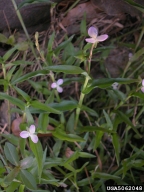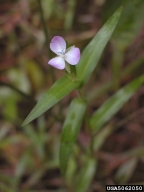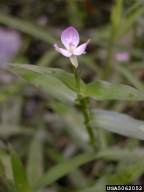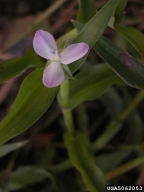| marsh dayflower | USDA PLANTS Symbol: MUKE U.S. Nativity: Exotic Habit: Forbs/Herbs |
| Murdannia keisak (Hassk.) Hand.-Maz. |
Jump to: Resources | Images | Distribution Maps | Sources
|
Taxonomic Rank: Liliopsida: Commelinales: Commelinaceae |
|
| Synonym(s): marsh dewflower, aneilima, Asian spiderwort, wartremoving herb, marsh dayflower | |
| Native Range: Temp. & trop. Asia (GRIN); | |
|
|
Identification, Biology, Control and Management Resources
|
| Selected Images from Invasive.org | View All Images at Invasive.org |
 Plant(s); in flower Linda Lee, University of South Carolina, Bugwood.org Additional Resolutions & Image Usage |
 Flower(s); Linda Lee, University of South Carolina, Bugwood.org Additional Resolutions & Image Usage |
 Flower(s); Linda Lee, University of South Carolina, Bugwood.org Additional Resolutions & Image Usage |
 Plant(s); in flower Linda Lee, University of South Carolina, Bugwood.org Additional Resolutions & Image Usage |
 Plant(s); in flower Linda Lee, University of South Carolina, Bugwood.org Additional Resolutions & Image Usage |
 Plant(s); Linda Lee, University of South Carolina, Bugwood.org Additional Resolutions & Image Usage |
 Flower(s); Linda Lee, University of South Carolina, Bugwood.org Additional Resolutions & Image Usage |
 Plant(s); Linda Lee, University of South Carolina, Bugwood.org Additional Resolutions & Image Usage |
| EDDMapS Distribution: This map is incomplete and is based only on current site and county level reports made by experts and records obtained from USDA Plants Database. For more information, visit www.eddmaps.org |
 State List This map identifies those states that list this species on their invasive species list or law. 
|
| U.S. National Parks where reported invasive: |
| Colonial National Historical Park (Virginia) |










